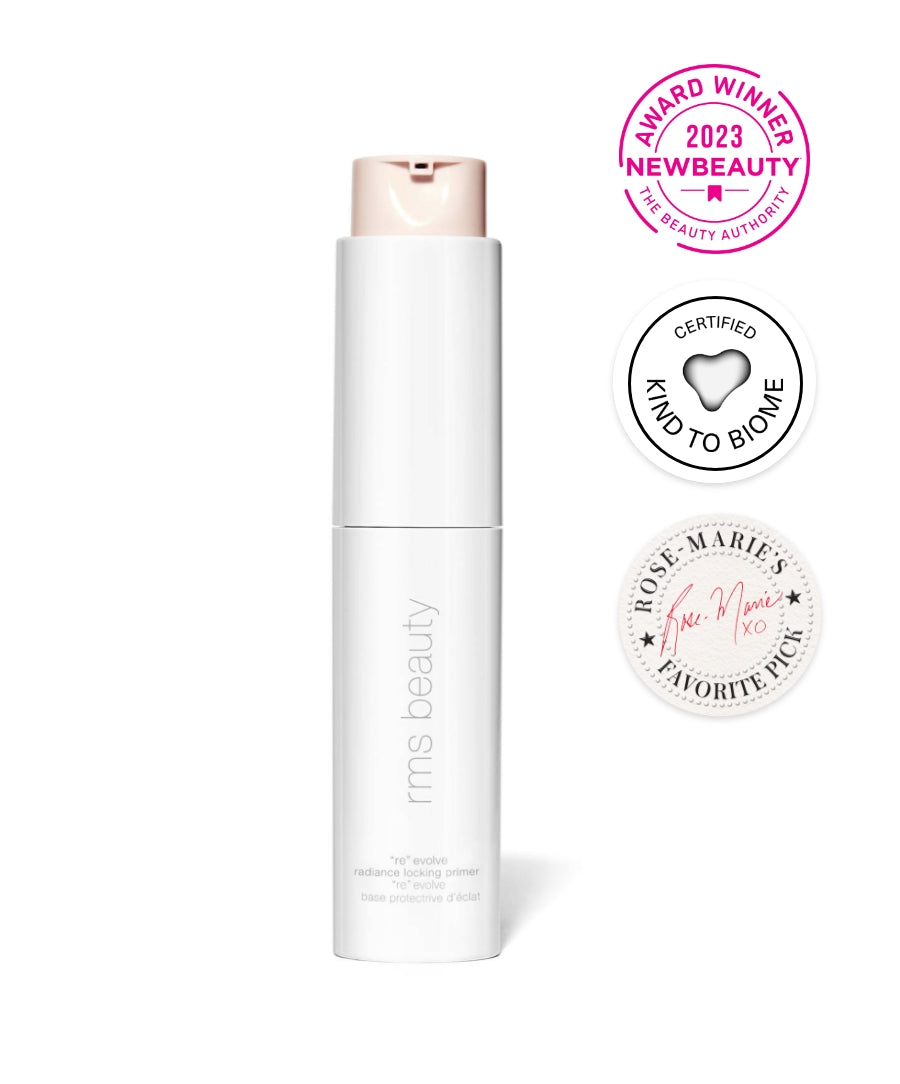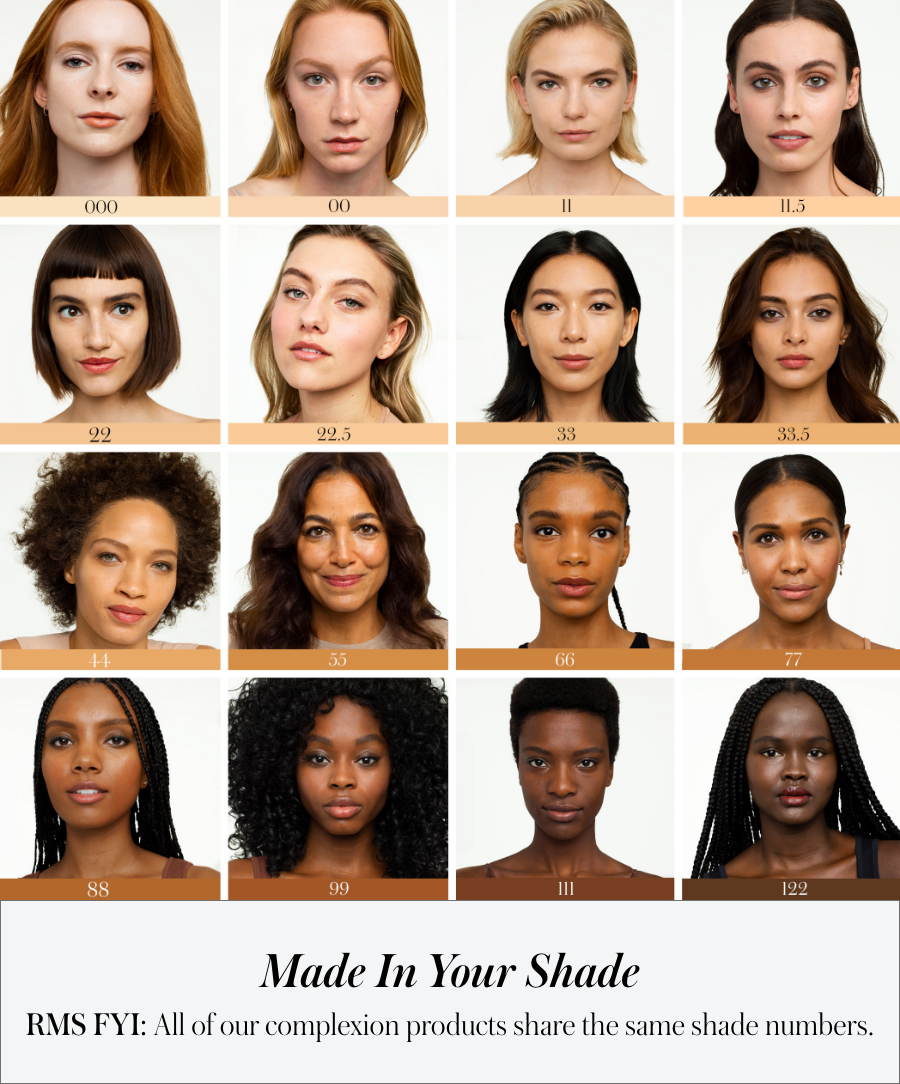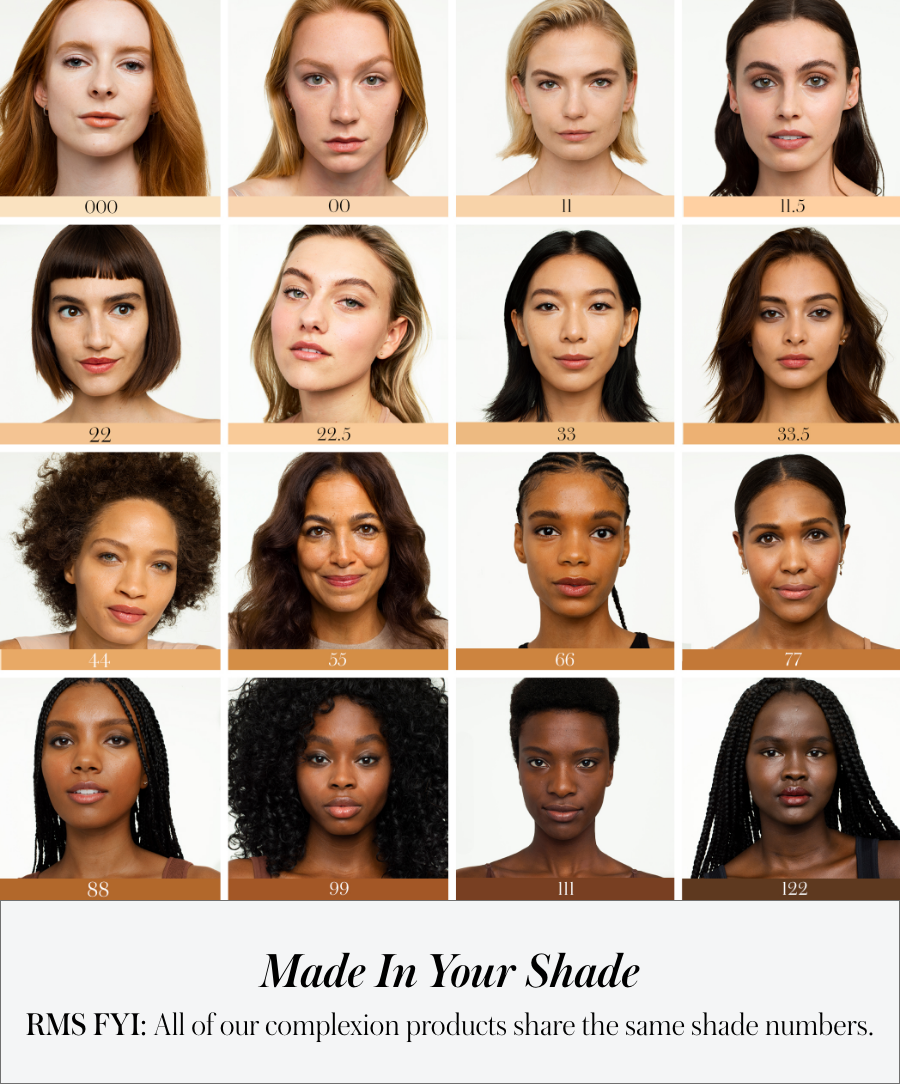Step by Step Guide on How To Apply Liquid Foundation

Foundation can go one of two ways: expertly applied or woefully wrong.
A tool that can help even out skin tone, offer coverage for imperfections, and give other makeup products a smooth surface to cling to, foundation is essential in any makeup bag. However, applying it correctly takes a little finesse.
Also important is ensuring your foundation is working to benefit your skin. Foundation can hide ingredients that aren’t safe for your body and don’t do your skin any favors. Natural, living ingredients work synergistically with your skin to help pump up hydration and increase radiance.
The team at RMS Beauty has everything you need to know to apply foundation effortlessly and naturally so that all you’ll notice is your true beauty, not your foundation.
What Should I Know About Foundation?
Traditional foundations often contain ingredients that trick us into thinking they’re good for our skin. Silicone is one of those ingredients. Smoothing a slippery, blendable foundation onto your skin feels good and usually gives you a flawless finish. You might even be convinced that the foundation is helping your skin.
The problem is that even though your skin feels smooth and hydrated, the benefits of silicone-based foundation aren’t real. In fact, silicone can be damaging to your skin and the environment. Here’s why.
The Skin Barrier
On the uppermost layer of your skin, there lives an entire community of microflora that helps protect it, maintain your skin’s pH balance, and keep your skin looking radiant. Some products can cause your skin barrier to become off-balanced, which can result in irritation and blemishes.
Silicone forms an occlusive barrier on your skin, trapping in bacteria, dirt, and oil, which could cause you to develop a breakout. It’s also not effective in keeping your skin’s pH balance regulated.
Silicone Doesn’t Wash Off
Silicones are hydrophobic, which means they resist water. This can make it harder for you to remove silicone-based products from your skin, or lead you to scrub too hard and experience irritation.
Silicone Prevents Product Layering
Once you apply a silicone-based product to your skin, that’s it. The barrier it forms traps anything on your skin inside and prevents anything else (like other products) from absorbing. In foundation, that’s a real problem because you’ll always want to apply your concealer after your foundation.
Silicones Are Eco Unfriendly
Some ingredients are bioaccumulative, which means they don’t break down quickly once they’ve been discarded. Silicone is one of those materials. Once you wash the silicone-based foundation off your face, it can collect in drainage systems and bodies of water for hundreds of years.
Avoiding silicone in your foundation is important, and at RMS Beauty, we’ve got a solution that works better than silicone-based formulas and is beneficial for your skin and safe for the environment.
How Can I Choose the Right Foundation?
Avoiding ingredients that could harm your skin is the first step in successfully applying liquid foundation like a pro, but the second step is choosing the right shade.
If you already know your skin’s undertone, you’re on the right track. Undertones can help us narrow down color palettes to certain shade families. If you’re not sure what your undertone is or have trouble deciding on the perfect, true-to-you shade, check out our helpful guide.
How Should I Prep My Skin Before Foundation?
Just like you prep ingredients in your kitchen before you begin to cook, you need to prep your skin for foundation application. At RMS Beauty, we believe skincare should start the moment you wash your face and continue through your product application.
Use a Primer
Once you’ve cleansed and hydrated, you can use a primer to lock in your skincare and give your liquid foundation a grippy surface to cling to.
- Product to try: RMS Beauty ReEvolve Radiance Locking Primer. Our rapidly absorbing gel formula is packed with clean, living ingredients that support your skin barrier and help it stay balanced.
For true minimalists, using our primer is enough to give skin a smooth texture and lock in your hydrating skin products all day.
How Should I Apply Liquid Foundation?
Avoiding harsh lines around your jaw, making sure your foundation is blended, and knowing how to add additional product carefully will help keep your foundation looking professional, natural, and believable.
This tutorial will work for virtually any high-quality, blendable liquid foundation. We’ll be using
RMS Beauty ReEvolve Natural Finish Liquid Foundation.
This medium coverage foundation gives a natural finish that won’t clog pores and lasts 12 hours. Our foundation stands up against sweat and water and contains ingredients that make it beneficial for your skin.
The silicone-free formula contains Tightenyl™, a powerful blend of plant-based ingredients clinically proven to smooth, firm, and tone the skin while you wear it.
Formulated with RMS Beauty’s adaptogenic blend of herbs that help hydrate, nourish, and support the skin barrier, this foundation effectively blurs the lines between skincare and cosmetics while blurring out imperfections.
The easiest way to apply liquid foundation is with your fingertips or a beauty sponge.
Step 1
Apply a half pump of product to the back of your hand. If you are using a different liquid foundation, you’ll want to measure about a pea-sized amount of your foundation onto your hand. Avoid dipping dirty brushes or sponges into the container or using your fingers to scoop out product. This can introduce bacteria in your product that can later be transferred to your skin.
Step 2
Dampen your beauty sponge. RMS Beauty’s Skin2Skin Beauty Sponge is designed with a unique tip that resembles a fingerprint for even more natural application. Using the tip of your sponge, lift a small amount of product from the back of your hand.
Step 3
Begin to blend foundation by pressing it into the skin in areas where coverage is needed most. Usually, this will mean the eye area, cheeks, nose, chin, and forehead. Unless you have blemishes or imperfections near your jawline, you don’t need to apply foundation in those areas.
Blend outward, and your foundation should naturally fade toward the edges of your face so you don’t end up with a harsh, noticeable line.
Step 4
Repeat the previous steps until you have evenly distributed the first layer of foundation to your skin. If you don’t need much coverage, you can stop here and move on to step 6. However, if you need additional coverage in some or all areas, move to step 5.
Step 5
Buildable coverage is what separates a high-quality foundation and a low-quality foundation. Coverage should be adjustable for your specific needs. Once the first layer of foundation has dried completely, you can add additional coverage with your beauty sponge where you need it.
Using the same technique of applying the foundation to the back of your hand and blending it in with the sponge, add the coverage you need. Avoid adding thick layers of foundation under the eyes, which can make coverage look cakey.
Step 6
Once you’ve applied the foundation you need, go in with a concealer to help tone down redness and dark circles or cover blemishes. RMS Beauty’s UnCoverup Concealer is formulated with ingredients like coconut oil to help support your skin, soothe irritation, and blend effortlessly with other RMS products.
Need help finding a concealer shade? We’ve got a helpful guide for that, too.
Step 7
Once you’ve applied concealer, you can consider your face makeup complete and begin blending in bronzers, luminizers, or blushes. You don’t need to use a setting powder to “set” your liquid foundation, as most formulas today include ingredients that help them grip the skin and stay put.
What Are Some Tips and Tricks for Applying Foundation?
Don’t get frustrated if your foundation doesn’t look as effortlessly natural as you had hoped the first time you apply it. It takes practice to get it right, but here are some tips and tricks to help you easily get great coverage.
- Be conservative. Remember, you can always add more, but it’s hard to remove too much. Start with just a small amount of foundation, and remember you can build.
- Avoid the urge to “bake” your makeup with excess amounts of loose or pressed powder. You don’t need it, and it may leave your makeup looking cakey.
Flawless Foundation
Applying foundation flawlessly is easy once you have a little practice. Make sure you’re using a silicone-free foundation with skin-beneficial ingredients, and always prep your skin with the right skincare products and primer before you start.
For skincare that is the cleanest and greenest available, trust RMS Beauty to deliver. Our products are eco-friendly and contain food-grade ingredients that work synergistically with your skin to restore balance, hydration, and beauty.
Sources:
The human skin microbiome | Nature Reviews Microbiology
Main Uses and Environmental Emissions of Volatile Methylsiloxanes | SpringerLink















